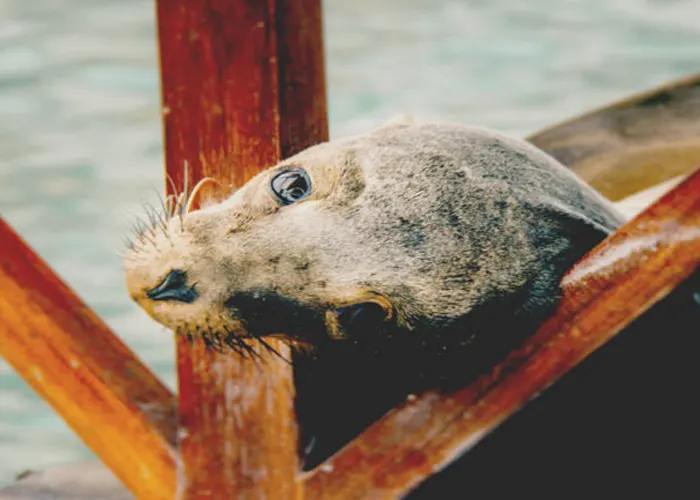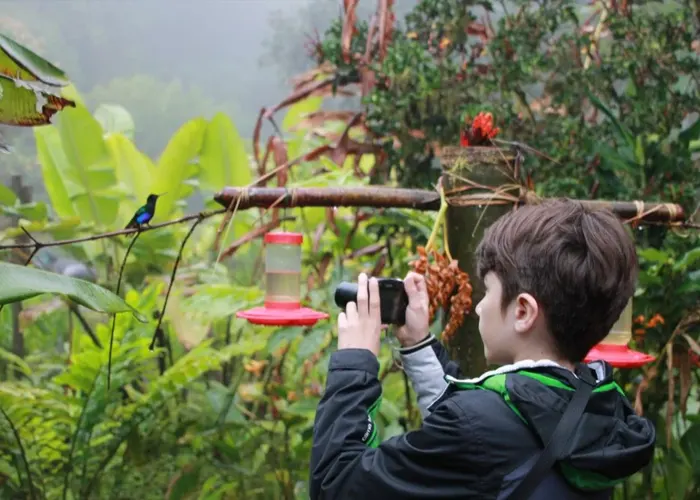Galapagos racer snake and Sally Lightfoot crab

SOLEQMASTER
A variety of diverse creatures call the archipelago located west of Ecuador home. In previously published blog articles, we already reported about different animal species, such as lizards, sea lions, different bird species and the namesake of the islands, the Galapagos giant tortoises. This blog is about two animals that are characteristic of the Galapagos Islands. The first part is about the Galapagos Racer Snake, known for its good eyes. The second part is about the Sally Lightfoot crab, which can move and hide quickly, but is easy to spot because of its red color.
GALAPAGOS RACER SNAKE
The Galapagos Racer Snake is divided into western and eastern subspecies. The western is the largest snake species in the archipelago, ranging from 0.80 m to 1.25 m in length. It is characterized by striped markings and spots. As its name suggests, it is one of the fastest snake species in the world. It can move at up to 3.5 miles (5.63 km) per hour and also has extremely good eyesight, which allows it to detect even the slightest movement of its prey. For tourists, however, it is harmless. As a strangler, it is not strong enough to harm humans, and even the small amounts of venom it possesses are not enough to pose a threat to us.
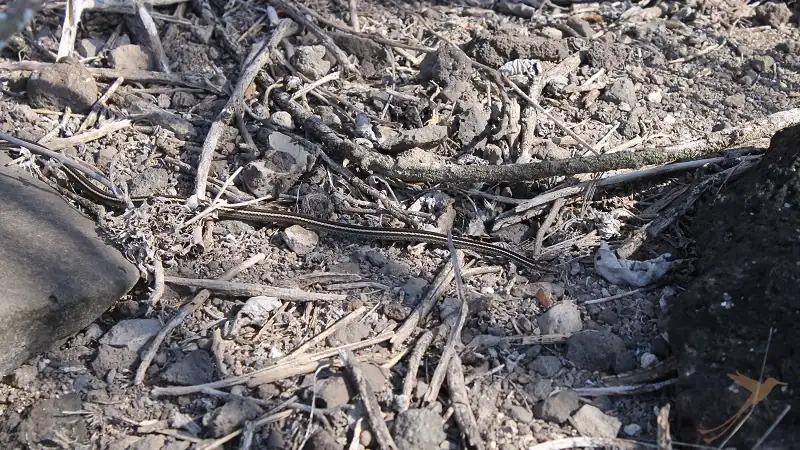
Unlike most other species living in Galápagos, the western racing snake is not very easy to find, it is shy towards humans and has good hiding places in volcanic rocks, mainly on the dry islands of Fernandina and Isabela. In addition, it tends to be active at dawn and in the evening, but not during the day. The eastern subspecies is somewhat easier to find on San Cristóbal Island. They are solitary for most of the year, only gathering in groups between May and June to hunt for newly hatched marine iguanas. They feed on small mammals and reptiles such as lava lizards, grasshoppers, geckos, and baby iguanas. They do not chew their food but swallow the prey whole and digest it with the bones. In addition, they do not need to eat regularly, but only every few weeks. Little is currently known about the reproduction of the racing snake.
Endangerment
Little is also known about the endangerment status of the Galápagos Racer Snake at this time, the western species is probably considered not endangered, and the eastern species is considered slightly endangered. The main threat to this species is the Galápagos hawk, but introduced species such as pigs, goats, and cats.
Sally Lightfoot crab
The Sally Lightfoot crab is one of the most abundant species on the Pacific coast of South America and is characteristic of the Galápagos Islands. There it is also called “zapaya” by the locals. While juveniles are black, adults are reddish-brown in color and usually iridescent blue on the underside. They have four pairs of broad, flattened legs on their backs, making them extremely agile and fast. In addition, they have two front legs with small but robust pincers. Overall, the animals grow up to 20 centimeters in size, with the carapace alone accounting for up to 8 centimeters of the size. Life expectancy is up to 10 years.
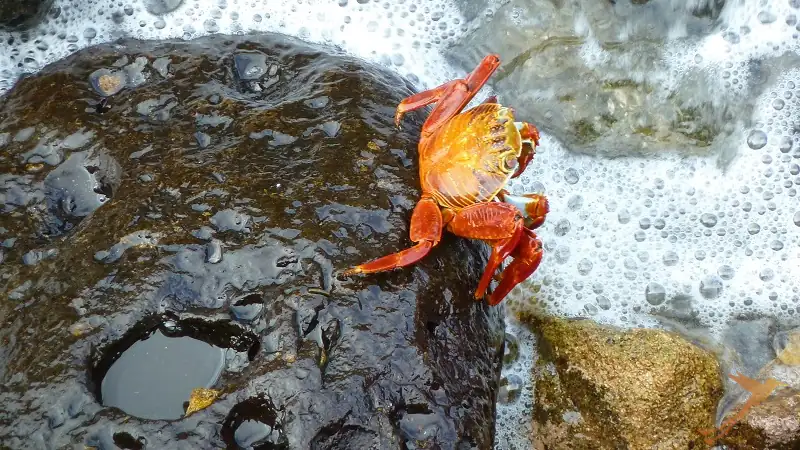
The crabs are found in large groups on the islands of Floreana, Santa Cruz, San Cristóbal, Isabela and Baltra. It is noticeable that they are mainly found next to the Galápagos marine iguanas. This is due to the fact that there is a cleaning symbiosis between the two species – the crabs remove ticks from the marine iguanas. Most notably, they can also be seen in rock crevices along the coast, where they shelter from strong swells. The animals are considered omnivores and feed mainly on algae and carcasses washed up from the sea. Little is known about their reproduction.
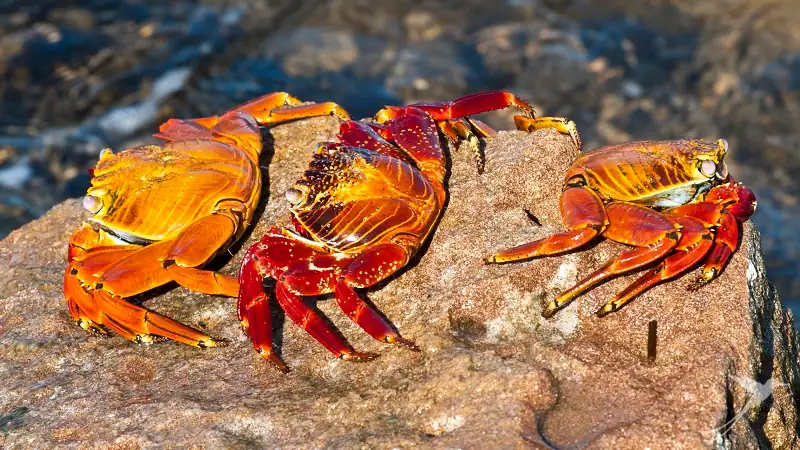
The endangerment status of this species is also unclear currently. However, it is certain that both native animals, such as Galápagos dwarf herons, octopuses, and tunas, and introduced cats pose a threat.

The racing snake and the Sally Lightfoot crab have caught your attention and you can’t wait to discover the two species yourself? We can take you to the beautiful Galapagos Islands and show the amazing flora and fauna of the island. Our experienced guides will provide you with more background information and he will make sure that you get to see as many creatures as possible. If you are also interested in getting to know the three other worlds of Ecuador, feel free to contact us. Besides the Galapagos Islands, the coast, the Andes, and the Amazon rainforest are waiting for you!
visit our other channels
Recent Posts
- From Manglaralto to Pacoche and surroundings April 18, 2024
- Excursions within the rainforest region of Ecuador April 5, 2024
- Ecuador in a state of emergency?! My personal experience March 22, 2024
- The 10 most beautiful lakes and lagoons in Ecuador – Part 2 March 12, 2024
- The 10 most beautiful lakes and lagoons in Ecuador – Part 1 February 23, 2024

